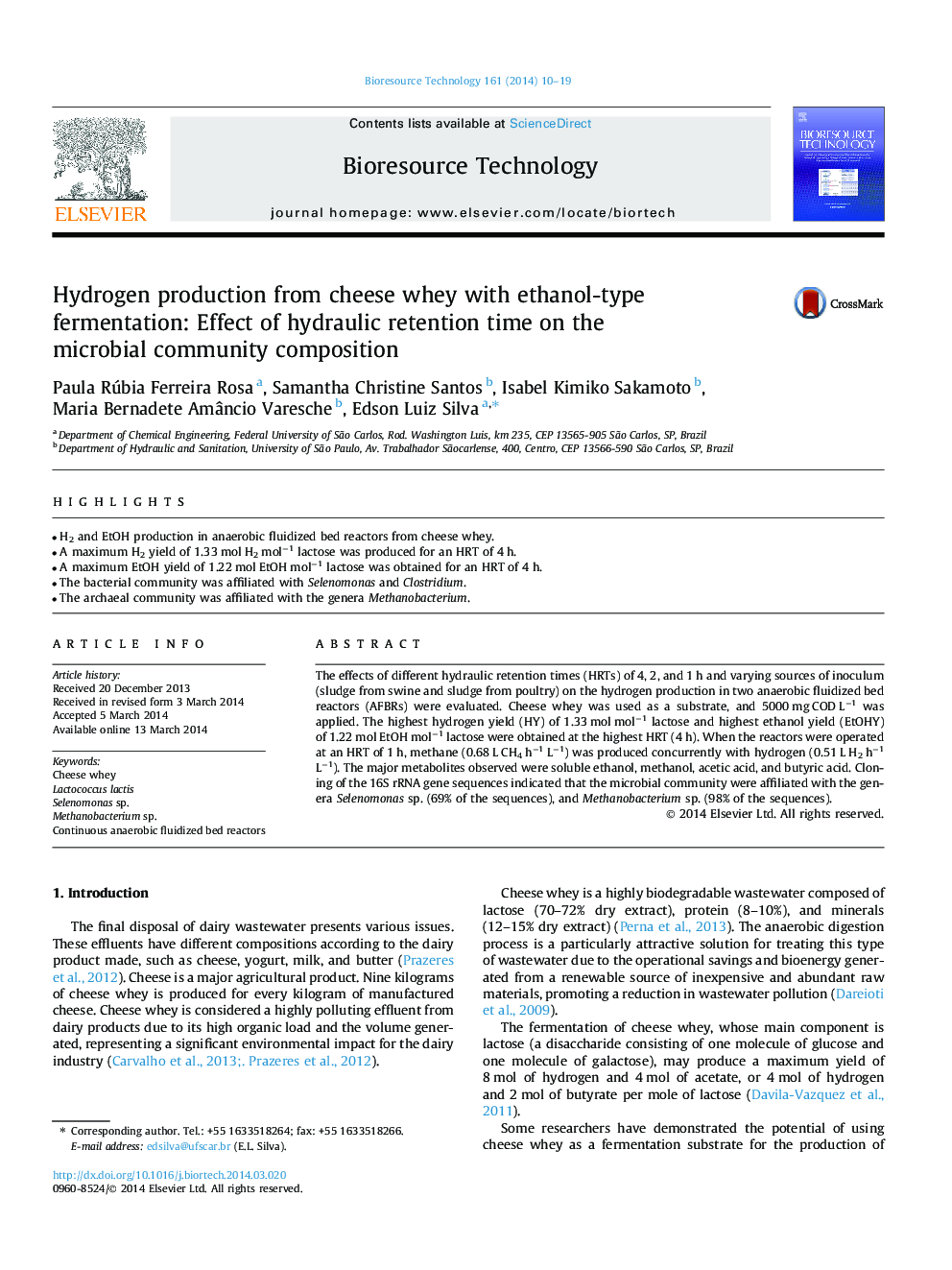| Article ID | Journal | Published Year | Pages | File Type |
|---|---|---|---|---|
| 7078443 | Bioresource Technology | 2014 | 10 Pages |
Abstract
The effects of different hydraulic retention times (HRTs) of 4, 2, and 1 h and varying sources of inoculum (sludge from swine and sludge from poultry) on the hydrogen production in two anaerobic fluidized bed reactors (AFBRs) were evaluated. Cheese whey was used as a substrate, and 5000 mg COD Lâ1 was applied. The highest hydrogen yield (HY) of 1.33 mol molâ1 lactose and highest ethanol yield (EtOHY) of 1.22 mol EtOH molâ1 lactose were obtained at the highest HRT (4 h). When the reactors were operated at an HRT of 1 h, methane (0.68 L CH4 hâ1 Lâ1) was produced concurrently with hydrogen (0.51 L H2 hâ1 Lâ1). The major metabolites observed were soluble ethanol, methanol, acetic acid, and butyric acid. Cloning of the 16S rRNA gene sequences indicated that the microbial community were affiliated with the genera Selenomonas sp. (69% of the sequences), and Methanobacterium sp. (98% of the sequences).
Related Topics
Physical Sciences and Engineering
Chemical Engineering
Process Chemistry and Technology
Authors
Paula Rúbia Ferreira Rosa, Samantha Christine Santos, Isabel Kimiko Sakamoto, Maria Bernadete Amâncio Varesche, Edson Luiz Silva,
